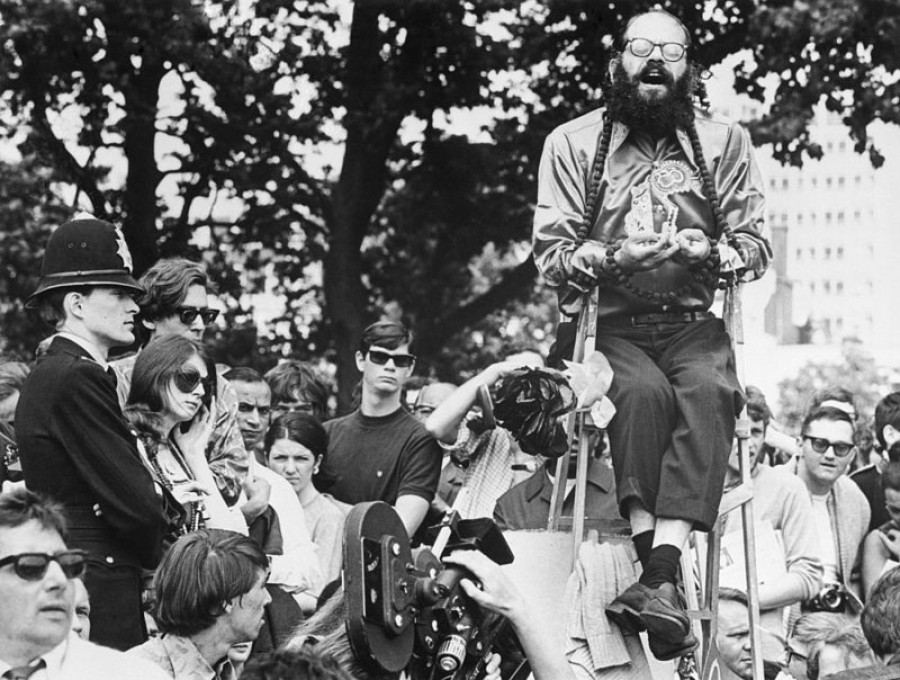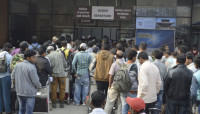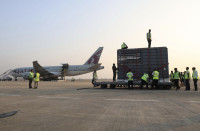Columns
Interest in Beat and hippie culture
Beat poets have found in Asian culture the elements of mystic and anarchist creative energy.
Abhi Subedi
The revival of interest in Beat literature and hippie culture in Nepal demands full-fledged academic research and writing. But by alluding to this topic here, I am only writing about my experiences as a teacher of literature that includes an American, a freak of the Sixties and literary person, who drew tremendous inspiration from the Beat Generation writers of America and the hippie poets and writers whom I befriended towards the end of the Sixties and the beginning of the Seventies.
I have written small recollections of that period here and there, given interviews to some foreign and native journalists and inquisitive youths, and published related articles especially since 2001. Though that influence remains deep in me, I have not particularly foregrounded that impact because I realised after completing my graduation from Tribhuvan University and starting to teach at the tertiary level, I did not follow the tradition of the Beat Generation either in my writing or in teaching. But that impression became the culture of my mind; it still plays a role in shaping my thoughts in some small ways.
Secret desire
I had a secret desire to look for some such writers and even teachers when I went to Britain to study and joined Edinburgh University in Scotland in the late Seventies. I did not find any erstwhile Beat writers or any hippies there. After about a year or so, however, I met some in the most unlikely spaces; I found some characters living with the hippie mode of quiet existence. I met them in a village on the border of Scotland. It was a great moment when I discovered that they had come to Kathmandu as hippies, and had great memories of the place. The couples with Zen calmness and a poetic sense of detachment touched me deeply. I don't know where they are now. How would I know anyway!
But what has struck me over the years in Nepal is a strange but interesting resurgence of interest here in Beat Generation writers and hippies. I find that amazing because those who take an interest in them are young people; and with some exceptions, they work in different forms of the media. They call and say they want to meet me. The purpose of such meetings would be to have dialogues with me mainly about hippies and some about Beat Generation poets. I have taken this as a simple curiosity among young people to know about the strange visitors of the Sixties.
But at first I didn't know why they wanted to talk to me about this generation of Western visitors and that movement that I always hold in great esteem. There is a visceral element in my story. I always thought and I still do, that was purely my personal experience, a story that I have always considered as a private one. It changed, however, after I met some scholars of South Asia. Meeting an American academic scholar with an open and poetic mind named Mark Liechty, a professor of anthropology and history at the University of Illinois in Chicago who was doing research about what he calls "countercultural seekers" by relating that with tourism in Nepal, made a difference. At first reluctantly, but later with a greater sense of interest, I shared my stories and experiences with him. He published a book entitled Far Out whose Nepal edition came out from Martin Chautari in 2019. He has written about our conversations in a couple of chapters. After reading Mark's interpretation, I knew what it was that I was secretly carrying with me. He has cogently put the conversation in a context that is both academic and literary.
A few Western journalists came to talk to me about that experience and put the conversations online. But what has struck me as very interesting is the growing interest in hippies and Beat Generation poets among young journalists to whom it is the name of some exotic culture and an experience that they believe holds significance today because Nepal has opened up almost all avenues of communication with the world. And they rightly believe that a redefinition or interpretation of the moments of encounters with the world and the experiences of the people of the earlier generation is very important.
An erstwhile student of mine at the English Department of Tribhuvan University who has been accepted by a university in America to follow graduate studies leading to a PhD in the South Asian interest in Beat poets has brought this question home again. Leading Beat poet Allen Ginsberg's promenade in India between 1961 and 1963 generated interest in the countercultural reinterpretation with poetic confidence. Ginsberg realised that such a discovery was essential to instil new life into the American culture.
Beat poet Ginsberg and his compatriots like Gary Snyder, Jack Kerouac, Gregory Corso and others were trying to develop a creative energy that would counter the growing capitalist and military-oriented cultures by evoking the mysticism and poetic power of Asian culture in general and Indic culture in particular. For that they found in South Asian and Asian culture the elements of mystic and anarchist creative energy that could be used in poetry and other writings.
Uncanny parallel
The Beat poets' South Asian interest lay in their conviction that the mytho-poetic culture they found here gave them a language to write at once about politics, culture, democracy and unrestricted freedom and to protest against the Cold War situation. The range of themes they discovered in Asia was wide. They believed that they had found the language to address the nation, the rulers, mysticism, literature and the common people. Their interpretation of the Indic singing and performance culture was one way of achieving that.
The growing interest of Nepali youths in hippie culture and Beat Generation literature may not be directly related to the original spirit of those movements of the Sixties in the West. But what is interesting in their quest is that they want to draw energy from the experience of the Sixties that they have encountered in literature, music, paintings and colourful performances. A certain uncanny parallel exists between the militaristic and Cold War culture of the Sixties and the one that is growing in the world today. That could be the reason why youths want to know more about the resistant genius of that time. I am especially impressed by the simultaneity of the interest among the youths here about the stories of the Sixties that Nepal experienced, and the literature written by American and other poets and travel writers of that period. This subject is both fluid and academic.




 11.12°C Kathmandu
11.12°C Kathmandu













%20(1).jpg&w=300&height=200)

